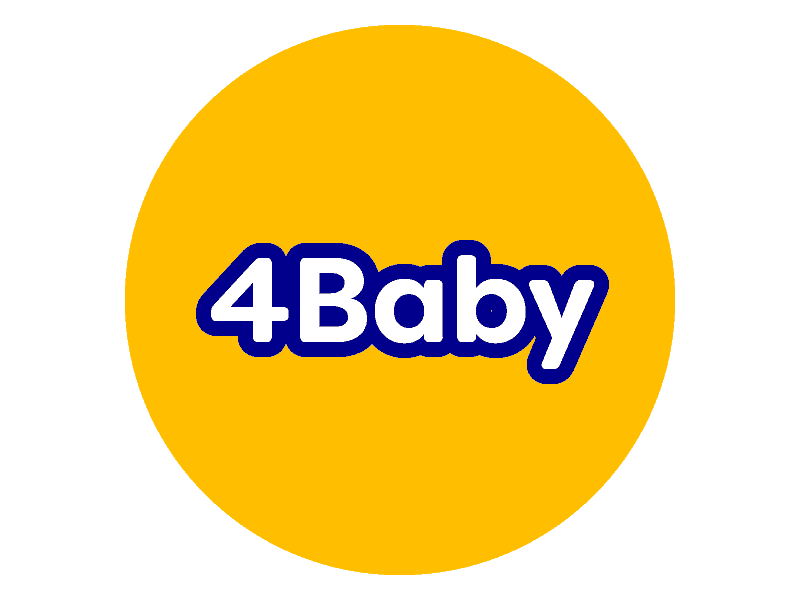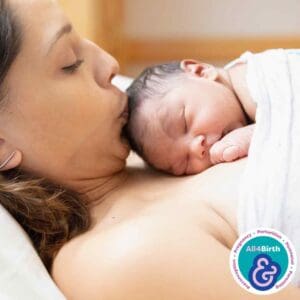Factsheet – Bathing your new baby
Written by Alicia Burnett
Midwife, UK
Instagram @_aliciaburnett
Twitter @ABurnett_RM
Summary
This fact sheet provides an accessible summary of the evidence around infant bathing. This document aims to help parents understand how to safeguard their baby’s safety while maintaining their infant’s hygiene. This factsheet also provides midwives and health care providers with advice that can be shared with parents to help them protect their newborn babies’ delicate skin.
What does our skin do?
Our skin performs a number of important functions; it helps us detect sensations such as pain and temperature etc, protects us against dehydration, regulates our body temperature, produces vitamin D and protects us from extraneous injuries.1 Our skin’s ability to fulfil these jobs depends upon its remaining hydrated and pH level remaining balanced, because when babies’ skin becomes dry or has an unbalanced pH, problems including eczema, cradle cap, nappy rash, baby acne and thrush can arise.2
Baby’s first bath
When you first bathe your baby is entirely up to you, apart from keeping your baby’s umbilical cord stump as clean and dry as possible until it completely dries up and falls off by the time your baby is around two weeks old, it is normally safe to bathe your baby whenever you are ready to. There is a lack of agreement amongst experts about the best time to bathe your baby for the first time. The World Health Organization (WHO) suggest that parents should wait until their babies are at least 24 hours old before bathing them for the first time, but if your cultural beliefs make bathing your baby before 24 hours has passed necessary, WHO recommend waiting at least 6 hours before the first bath takes place.4
Topping and tailing
Very young babies usually do not need daily baths, and topping and tailing (restricting bathing to their face, neck, hands and genital area) is often enough to maintain adequate baby hygiene.3 Although it is no longer commonplace for midwives to help parents top and tail their new babies, topping and tailing is often addressed by private or NHS antenatal classes (otherwise known as parentcraft classes). If your antenatal classes do not cover topping and tailing or parentcraft classes are not offered to you, do not hesitate to ask your midwife for advice about topping and tailing your baby before being discharged from their care. Health visitors can also provide support with infant hygiene or you can bookmark this Factsheet on your web browser to make the following infant bathing advice easy to find:
- Collect everything you need: a bowl of warm water, a clean towel, cotton wool, a clean nappy and clean clothing.
- Place your baby on a flat surface, remove all of their clothing from apart their nappy and wrap them in a clean towel.*
- Dampen the cotton wool with water and gently wipe around your baby’s eyes, starting from the inner corner of each eye and using a fresh piece of cotton wool for each eye to prevent spreading any infection from one eye to the other.
- Using a new, damp piece of cotton wool, clean around your baby’s ears, then gently pat the area dry with the towel.**
- Wipe the remainder of your baby’s face, as well as their neck and hands, then gently dry them with the towel.
- Remove their nappy and wash their bottom and genital area with clean cotton wool and warm water. Dry these areas carefully, including in between the folds of skin, and put on a clean nappy.
*Take care not to leave your baby unattended on a changing table, bed, sofa etc.
**Never insert cotton wool or cotton buds inside your baby’s ears.
Bath-time safety
Bath time can be fun for parents and their babies and provides a great opportunity for parent-baby bonding. So, if your preference is to bathe your baby, follow these tips to keep bath-time fun and your little one safe:
- NEVER leave your baby or infant unattended in the bath for any period of time — assemble everything you need before you start (a clean baby bath/bowl, warm water, cotton wool/a clean muslin, a clean towel, a nappy and clean clothes)
- Make sure the bath water is warm and not hot. The best temperature for any water used for bathing or topping and tailing should be between 37–38o Celsius, and bath water should always be mixed thoroughly to prevent any hot spots
- To prevent hypothermia (dangerously low body temperature), keep the room you bathe and dress your baby in warm, and gently pat their skin dry before putting their clothes on
- Keep your baby’s head out of the water
- End bath-time after 5-10 minutes to prevent damaging your baby’s delicate skin by over-exposing the protective outermost layer of your baby’s skin to water
Bath products
Soaps and bubble baths are not recommended for use when bathing very young babies and clinical evidence only advocates for the use of clean, plain, warm water.2 However, water can be less effective at removing baby poo and some heavier moisturisers or nappy creams.2 If you choose to use a cleansing agent when bathing your baby, there is evidence that mild soaps with a neutral pH (5.5-7.0) are most suitable for very young infant’s skin.5 It is also recommended that bathing products containing sodium lauryl sulphate are avoided when choosing bathing products for babies,6 because they strip the skin of its natural oils (otherwise known as sebum, an oily substance which moisturises and protects the skin) and increase the risk of it becoming dry and more vulnerable to damage.
Links to other resources
 Websites
Websites
Washing and bathing your baby NHS – https://www.nhs.uk/conditions/baby/caring-for-a-newborn/washing-and-bathing-your-baby/
References
- Structure and functions of the skin. Health and Safety Executive. https://www.hse.gov.uk/skin/professional/causes/structure.htm. Updated May 5, 2021. Accessed January 17, 2022.
- Lavender T, Bedwell C, O’Brien E, Cork MJ, Turner M, Hart A. Infant skin-cleansing product versus water: A pilot randomized, assessor-blinded controlled trial. BMC Pediatr. 2011;11(35). doi:10.1186/1471-2431-11-35.
- Washing and bathing your baby. National Health Service. https://www.nhs.uk/conditions/baby/caring-for-a-newborn/washing-and-bathing-your-baby/. Updated September 15, 2021. Accessed January 17, 2022.
- World Health Organization. WHO Recommendations on Newborn Health: Guidelines approved by the WHO Guidelines Review Committee. Geneva: World Health Organization; 2017.
- Brandon D, Hill CM, Heimall L, et al. Neonatal Skin Care: Evidence-Based Clinical Practice Guideline. 4th ed. Washington DC: Association of Women’s Health, Obstetric and Neonatal Nurses; 2018:1-147.
- Scanlan R. What parents and professionals need to know about newborn skincare. Royal College of Midwives. https://www.rcm.org.uk/news-views/rcm-opinion/newborn-skincare/. Published 2018. Accessed January 17, 2022.








